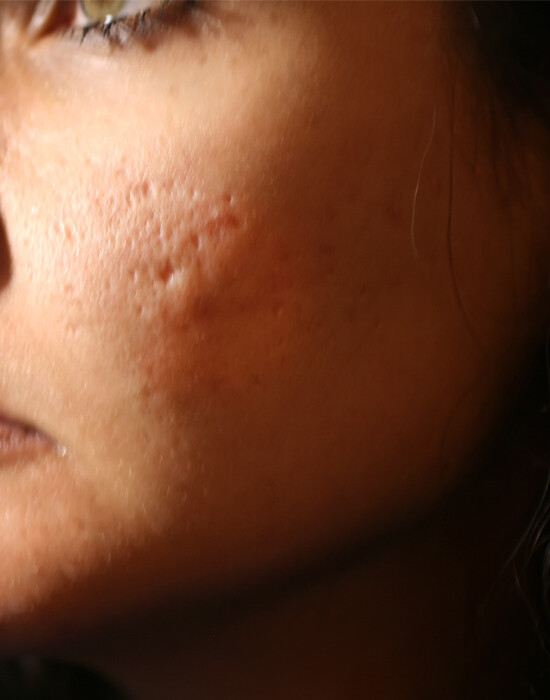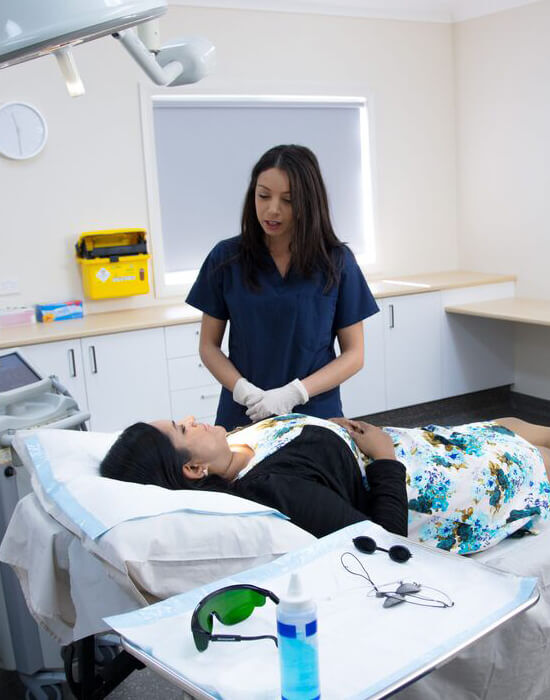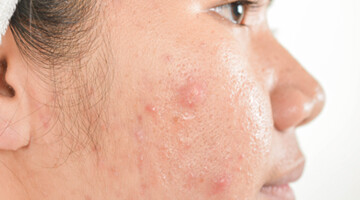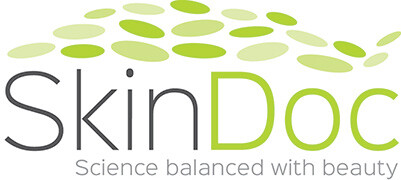All about Acne
Acne is the most common skin condition affecting young people aged 15-24 years. Teenage boys and young men are more likely to have acne and more severe acne due to the presence of higher levels of the male hormone androgen, than teenage girls. In females, acne can be hormonally exacerbated due to changes in oestrogen. Women are more likely to experience a prolonged period of acne that can last well into their 30s and 40s. Women can also develop acne for the first time as an adult.
We offer acne treatment for all ages at our practice in Liverpool, ideally situated for patients in Cabramatta, Moorebank and surrounding areas of Sydney
For a more clinical overview of this condition, we provide the following information:

What causes acne?
Acne is a complex condition and involves four basic features in the pathogenesis of acne:
- Hyperkeratinization of the pilosebaceous duct
- Colonization by bacteria with Propionibacterium acne ( P.acne)
- Increased sensitivity to androgens
- Inflammation
Unfortunately, severe acne can lead to scarring.
Acne scar classification
Acne scars can be broadly subdivided into 3 large groups
- Macular = flat scars
- Atrophic =-depressed scars
- Hypertrophic = elevated scars
Atrophic scars are the most common, followed by the macular and the least common are the hypertrophic scars.
Macular scars
These are due to differences in colour and texture from skin that has not been affected by acne. These areas may be red, brown or slightly lighter in colour that the rest of the patient’s skin.
Atrophic scars
These are depressed scars. They can subdivided into ice pick, boxcar, rolling , linear and lipatrophic scars.
Ice Pick Scars
These scars are the most common and make up 60-70% of all scars seen in acne. The opening at the surface is wider than the deepest part of the scar and they are V shaped. They tend to worsen with age. The most common areas of involvement are the cheeks, between the eyebrows (glabella) and nose.
Boxcar Scars
These type of scars may be round, oval or irregularly shaped scars with vertical edges. They are punched out scars and do not taper to a point. The most common areas are the temples and cheeks.
Rolling Scars
Rolling scars are wide scars and are due to tethering of the epidermis and dermis to the underlying fat. They are most common on the lower cheeks and jawline and tend to worsen with age.
Linear Scars
Linear scars are usually atrophic and can be narrow lines or wide linear depressions.


Lipoatrophic Scars
Lipoatrophic scars are due to the destruction of fat and occur following severe cystic acne. They are more common in males with minimal subcutaneous facial fat and tend to give an accentuated gaunt appearance.
Elevated Scars
These scars are less common and there are four main types, hypertrophic, keloidal, popular and bridging scars.
Hypertrophic scars
These scars are often seen along the jawline and are more common in males. These scars do not extend beyond the boundaries of the original acne spot. They are either skin -coloured or hyperpigmented.
Keloidal scars
These scars extend beyond the boundaries of the original acne spot. They are often itchy. Keloidal scars are more common in males and are often on the back, shoulders and chest.
Papular scars
They occur as a result of destruction of the dermis between hair follicles and are due to outpouching of the epidermis due to destruction of the underlying dermis. They are hypopigmented and most commonly seen on the back, chin and nose.
Bridging scars
These scars are often are often tunnels and may often contain odorous sebum.
Hormonal changes
Acne often starts at puberty due to hormonal changes. Polycystic ovarian disorders can aggravate acne in women.
Acne can be made worse by the following:
Diet – High GI foods and diets high in dairy foods have been proposed to aggravate acne.
Stress – Many young people have noted that their acne is worst during periods of stress.

Acne Treatment
For successful acne treatment, we can advise you on suitable over the counter preparations for your skin
including suitable cleansers, moisturisers and effective ingredients in anti-acne preparations.
Mild acne
Comedonal acne
This type of acne can be treated with topical retinoids and benzoyl peroxide.
Moderate acne
In this type of acne topical antibiotics in addition to retinoids and benzoyl peroxide may be effective.
Pustular and inflammatory acne
Oral antibiotics or other oral treatments are often required.
Severe pustular, inflammatory or nodulocystic acne
This type of acne needs to be treated aggressively due to the high risk of scarring. Oral treatment with 13 cis-isotretinoin often leads to permanent resolution of acne.
Unfortunately some patients can’t tolerate 13 yet may have severe acne. In other situations women may be considering having a baby in the near future and therefore this drug is contraindicated. A good and effective treatment option is Kleresca
Flare of acne
About 6% of patients can experience a sudden flare up of acne in the initial stages of medication. Patients who are more prone to a flare of acne include those patients with a large number of macrocomedones, acne on the trunk and often male and are young. If a flare occurs, the dose of isotretinoin is reduced and oral steroids are introduced for several weeks.
Topical Acne Treatment
Topical retinoids may lead to softening of hypertrophic scars, decrease in itch and possibly a decrease in the size of the scars.
They are most useful acne treatment for scarring.
Skin Smoothing Treatment for Acne Scars
These skin smoothing treatments can be used in macular or mild atrophic scars. A variety of skin smoothing treatment agents can be used
- 20-30% salicylic acidv
- 40-50% mandelic acid
- 40-60% pyruvic acid
- 90% lactic acid
- 35-70% glycolic acid
- Jessner’s solution
- 15-35% TCA
- or a combination of the above peels
CROSS Technique
Chemical reconstruction of skin scars (CROSS) is a procedure using high concentration of trichloroacetic acid (TCA) focally on the atrophic acne scars to induce collagenisation leading to cosmetic improvement of the scars. It is applied to ice pick acne scars using a sharp wooden applicator to produce frosting on each scar. This leads to increase collagen production in the dermis but spares the intervening skin. Collagen remodelling may occur for several months and help fill up the scar tissue after TCA CROSS technique has been used.
It is best used for ice pick scars. 50% to 100% TCA is applied to the base of the scar. Frosting which occurs 10-15 sec after the TCA application is due to coagulation of the epidermis and dermal proteins and is used to monitor the depth of the peel. The procedure is often repeated every 2 weeks for up to 4 sessions.
Following the procedure some crusting may occur particularly with the higher strengths TCA. Antibiotic cream and sunscreens should be continued until the crusts have detached spontaneously which may take 2-4 days. Makeup can be applied 24 hours after CROSS.
Transient post-inflammatory hyperpigmentation and hypopigmentation may occur following CROSS technique. It is a cost-effective treatment for ice pick scars and may be combined with other modalities.
Treatments include prescription gels, cream applied to the skin and oral treatments such as antibiotics, anti-androgens and isotretinoin.
Photobiomodulation
Newer treatments that are at the cutting edge for acne using photobiomodulation are now available at our practice. This new treatment uses visible light to trigger biological reactions in the skin through a photochemical pathway. The light source used include light emitting diode LED therapy incorporating a blue and red light. Another treatment that we have recently introduced is using a chromophore containing gel applied to the skin which is activated by another LED lamp that emits a fluorescent light. Both treatments are available at our practice.
Photodynamic therapy using a photosensitising medication, aminolevulamic acid ALA is used to selectively to destroy target tissue. ALA is concentrated in P. acne and sebaceous glands and upon activation of a light source such as IPL or red or blue light a localised reaction occurs resulting in destruction of P acne.
In year 2000 ALA-PDT was first used in the treatment of acne. Over the next decade there has been variations in the incubation time, type of activating light (wavelength nm, dosimetry J/cm2, irradiance W/cm2) rendering it difficult to compare results.
PDT for Acne
Firstly, a photosensitizing agent most commonly a 5% solution of ALA (aminolevulinic acid) is applied to the skin under occlusive dressing for up to 3 hours. This incubation time allows the photosensitizing agent to be absorbed into the skin and into the sebaceous glands. Next red or blue light is shone on the skin for 15-20minutes. This light activates the photosensitizing agent which kills the acne bacteria, P. acne and helps shrink the sebaceous glands. More recently IPL, pulsed dye lasers and other lasers have been used as sources of light in PDT for acne.
The main difference between lasers and LED light devices is that lasers tend to use a smaller, more focused area of the skin and emit stronger light to the area when compared to LED devices. The advantage of using lasers is that they may require a shorter incubation time with the photosensitizer.
Increasingly dermatologists have been using IPL for PDT therapy in the management of acne. IPL uses high powered light sources that flash light onto the skin. Unlike lasers and LED light devices, which uses a specific wavelength, IPL shines broad-spectrum light that includes wavelengths of 500 to 1200nm. Incubation time is decreased with lasers and IPL devices to 45 minutes compared to LED devices.
The photosensitizers used are ALA (aminolevulinic acid) and MAL (methyl-aminolevulinate). MAL may be effective as a photosensitizer as it has a higher affinity for lipids such as sebaceous glands and sebum than ALA. MAL may also achieve deeper skin penetration than ALA. Incubation time is decreased with lasers and IPL devices to 45 minutes compared to LED devices.
Side effects of PDT
This include redness, swelling, itching, peeling and some crusting for a week or two as well as occasional hyperpigmentation that can last for a month after the procedure and is more common in people of darker skin types. Rarely some patients may experience a flare of acne that is transient and then spontaneously subsides. As the skin is sensitive to light it is important to stay completely out of the sun and avoid bright indoor light for 2 days after treatment.
Side effects vary with the type of photosensitizer used. One photosensitizer tends to produce more severe pain during treatment and has a higher chance of hyperpigmentation. Research is underway looking at other photosensitizers that produce less pain, greater efficacy and shorter incubation times.
Long term effects
Photodynamic therapy is still a relatively new treatment in the management of acne. PDT works by shrinking oil glands. Patients with acne tend to have larger sebaceous glands that produce more oil than people without acne.
Long term results suggests an average reduction in inflammatory acne of about 60% after 3 months. The best results are seen in people with more severe forms of acne. A large systemic review article published in 2016 reviewed all available clinical studies that evaluated the use of PDT in acne. The reviewers concluded that PDT is effective, and is effective for the more severe cases of acne. It worked well on acne in various sites include the back and chest.
Long term followup of these patients is lacking. More extensive studies on a larger population with a control groups are needed to reach conclusive results on the effectiveness of PDT on acne.
